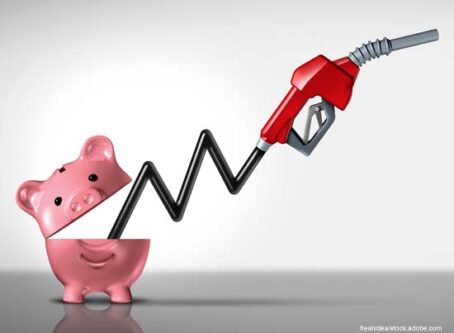Supply slow to catch demand, energy outlook says
Production and inventory factored heavily into the most recent release of the Energy Information Administration’s short-term energy outlook. Truck drivers will notice the effect in diesel prices.
“Obviously, (diesel) prices have gotten higher than we previously forecast,” Tim Hess, EIA’s project manager for short-term energy outlook, said. “It’s an inventory story on the global level. It’s just been slow to catch up with consumption and that’s resulted in falling inventories. That typically leads to rising prices.”
Looking at all fuel sources, inventories have fallen for six straight quarters, Hess said. In fact, at the end of January, inventories totaled 2.7 billion barrels, the lowest total since mid-2014.
“The whole picture is important,” Hess said. “It works down the line. With the tensions surrounding Ukraine, and when inventories are low, markets do get more concerned about supply disruptions. That’s also keeping prices up.”
Demand growth had been pretty strong coming out of the pandemic, but oil supply has been slow to catch up, Hess added.
“OPEC has not produced as much as their targets set,” Hess said. “In the fourth quarter of 2021, they produced 600,000 barrels per day less than anticipated, with some countries experiencing technical difficulties when ramping back up production.”
Diesel prices
It’s a similar situation for diesel, with demand reaching 4.4 million barrels per day in January.
“Part of that is heating oil demand is high,” Hess said. “Jet fuel demand is still low and hasn’t caught up to pre-pandemic levels, but refineries aren’t back up to running like they were before the pandemic.
To illustrate, diesel inventories are 19% below where they have been compared to the last five years.
With inventories where they are, EIA is forecasting average diesel prices above $3.50 for the first half of 2022. However, as winter turns to spring the attention will shift to crude oil prices as a gauge.
“We are expecting the downward price pressure on oil to be limited until inventories start to rebuild,” Hess said. “As we move out of winter that takes away the heating oil source of demand. What happens with crude oil prices is still going to be the main driver there. There’s still a lot of uncertainty. If inventories continue to fall our prices are forecast to be higher. However, prices will fall notably in the second half of the year, provided more rebuilding of inventories takes place.
In a Monday report, the EIA the average diesel price per gallon in the U.S. surpassed $4.
You can view the full short-term energy outlook here. LL









